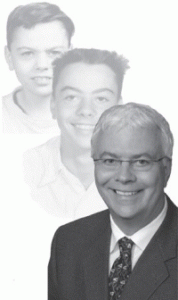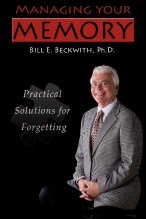I finally got around to reading a book that one of my clients gave me a couple of years ago – My Stroke of Insight by Jill Bolte Taylor, 2006, Plume: New York, http://www.drjilltaylor.com. Dr. Taylor is a Neuroanatomist who had a stroke on December 10, 1996 when in her mid 30s. There are two types of stroke. One is caused by blockage (infarction) of blood vessels in the brain, the other caused by bleeding (hemorrhage). Hers was the latter caused by the rupturing of an abnormal blood vessel structure, ateriovenous malformation, which she didn’t realize she had until it bled. Her recovery took 8 years – don’t believe the 6 month rule. The stroke left her completely disabled – unable to walk, talk, read, write or recall much of her life.
Although the book is an excellent, approachable, personal, and philosophical treatise on stroke and recovery from the inside out by an accomplished neuroscientist, I was most moved by her succinct summary of how to approach the neurologically impaired whether victims of stroke, head injury, retardation, or dementia. These insights are summarized in detail in Appendix B of her book. What follows is my selective listing of some of her most important considerations that we all (especially professionals) need to keep in awareness when working with those with brain injuries.
1. “I am not stupid.”
2. “Come close, speak slowly, and enunciate clearly.”
3. “Be as patient with me the twentieth [or one hundredth] time you teach me something as you were the first.”
4. “Take your time.”
5. “Be aware of what your body language and facial expressions are communicating to me.”
6. “Make eye contact with me.”
7. “Please don’t raise your voice – I am not deaf. I’m wounded.”
8. “Honor the healing power of sleep.”
9. “Use age-[retained skill] appropriate … educational toys [objects] and books to … [engage] me”
10. “Teach me with monkey-see, monkey-do behavior.” Liberally use prompts, modeling, and gestures.
11. “Trust that I am trying – just not with your [or my past] skill level or on your schedule.”
12. “Ask me multiple- choice questions. Avoid yes/no questions.” Invite me to do things rather than asking “Do you want to ….”
13. “Do not assess my cognitive ability by how fast I can think [or respond].”
14. “Speak to me directly, not about me to others.”
15. “Break all actions down into smaller steps of action.”
16. “Look for obstacles that prevent me from succeeding on a task.”
17. “Celebrate all of my successes.”
18. “Focus on what I can do rather than bemoan what I cannot do.”
19. “Introduce me to my old life. Don’t assume that because I cannot play like I used to play that I won’t continue to enjoy music or an instrument, etc.”
20. “Love me for who I am today. Don’t hold me to being the person I was before. I have a different brain now.”




